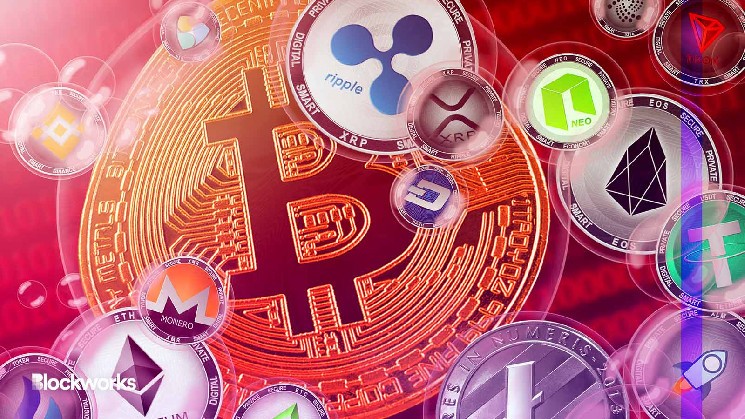The SEC Says These Crypto Assets Are Securities: Their Reasoning Is Wrong

Over the last few months, the SEC has taken to unilaterally labeling certain crypto assets as securities in unrelated lawsuits. But some industry participants say the agency doesn’t understand the technology behind these tokens well enough to make this claim.
In its complaint alleging Coinbase violated securities laws, the SEC listed 12 additional crypto tokens as securities.
The SEC’s suit against Coinbase, announced one day after similar charges were unveiled against Binance, focuses on claims that Coinbase facilitated trading of unregistered securities and operated unregistered brokerage services.
In the Coinbase lawsuit, the SEC claims that the following tokens are securities: ADA, CHZ, SOL, AXS, FIL, ICP, FLOW, NEAR, MATIC, VGX, SAND and DASH.
As of time of publication, Coinbase had not delisted any of the above assets.
In its Binance complaint, the SEC claims 10 tokens, separate from the exchange’s native BNB and BUSD tokens, are securities. The tokens listed in the suit are: SOL, ADA, MATIC, FIL, ATOM, SAND, MANA, ALGO, AXS and COTI.
The SEC’s move to list tokens in these exchange lawsuits is not new. In its July 2022 lawsuit against a former Coinbase employee for alleged insider trading, which settled on May 20, 2023, the SEC listed nine tokens as securities.
These nine tokens are: AMP, RLY, DDX, XYO, RGT, LCX, POWR, DFX and KROM. Coinbase has delisted only two of these tokens since the lawsuit was announced; Rally’s RLY and RGT, Rari’s governance token.
News analysis by Bessie Liu
The SEC does not understand crypto tokens
The SEC has been declaring crypto assets securities — a designation that brings tokens into the same US regulatory fold as stocks and bonds.
The regulator’s reasoning is, however, opaque. And at least in some cases, erroneous. As demonstrated by the SEC’s lawsuit against Binance on Monday, there are significant inaccuracies underpinning the agency’s move.
It all adds up to a demonstration that the SEC has a general lack of understanding when it comes to the relationship between individual tokens and protocols.
For example, the SEC has claimed that the “New Tendermint” is a significant contributor to the ATOM token.
“That’s not true, just because someone has made a website and claims they contribute to Cosmos, doesn’t mean they contribute to Cosmos,” Zaki Manian, the cofounder of Sommelier Finance, a protocol in the Cosmos ecosystem, told Blockworks on Tuesday.
Another instance: The SEC has said the Interchain Foundation sold ATOM tokens in 2017.
The Cosmos Hub, the issuer of the ATOM token, launched in March 2019, and ATOM tokens were not transferable at launch — meaning they could not be bought or sold. It was not until April 2019, after a hard fork that transfers were enabled.
“There’s a lot of history to the Cosmos approach to compliance, what you see from the SEC is a very superficial and largely inaccurate characterization of blockchain networks,” Manian said.
The SEC’s facts on ATOM are pretty poorly researched.
The SEC claims that ATOMs were sold in 2017. No one received an ATOM until April 2019 when the network voted to enable transfers.
The claim NewTendermint is a significant contributor to Cosmos. No contribution occurred.
— Zaki ⚛️? (@zmanian) June 5, 2023
The ATOM token itself, according to Manian, does not meet the SEC’s standard to be a security, as determined by the Howey test, because the founding entity of the project has collapsed.
One characteristic of the Howey test is that investors can reasonably expect growth “derived from the efforts of others.” There is also an expectation of profit under Howey — often from the security’s originators.
When it comes to ATOM, though, many contributors to its fundraise were also developers behind the project. Thus, the developers of the network and the investors were, at least in some cases, one and the same.
“In the history of Cosmos we recruited as many of the people who had been in the fundraiser as possible, to work, to run nodes and testnets and help build the project, build infrastructure during the launch of every step of way,” Manian said.
‘Deflationary model’ token test incorrectly applied
When it comes to other tokens, including SOL and MATIC, the SEC has designated them securities at least partly due to their “deflationary model.”
Referring to SOL, the SEC wrote that “this marketed burning of SOL as part of the Solana network’s ‘deflationary mechanism’ has led investors to reasonably view their purchase of SOL as having the potential for profit to the extent there is a built-in mechanism to decrease the supply and therefore increase the price of SOL.”
However, in the article cited by the SEC to support their claim, the author, Anatoly Yakovenko, clearly states that SOL ‘transaction fees’ are burned, a distinction the SEC overlooks but that is critical to the operation of the blockchain, and which is described in more detail below.
The Solana Foundation has noted in its economic documents that its token is an inflationary asset. In fact, the SOL token has always been inflationary.

SOL circulating supply | Source: Messari
The SEC drew comparisons to Polygon’s MATIC token. The regulator has claimed that Polygon has also marketed that it “burns” MATIC tokens accumulated as fees, indicating that the total supply of MATIC would decrease.”
But the SEC fails to understand something critical to the way blockchains work.
These “deflationary models” use a similar price modulation technique to Ethereum’s EIP-1559 — a fee-burning mechanism intended to minimize congestion. It’s designed to prevent block builders from manipulating fees in a bid to extract more from protocol users.
Polygon’s MATIC, in particular, is designed almost as a copy-paste from Ethereum.
“If EIP-1559 is a concern, then it’s going to be a concern for Ethereum too because it works exactly the same way,” Matt Cutler, co-founder and CEO of Web3 infrastructure company Blocknative, told Blockworks.
ETH gas fees…
Prior to EIP-1559, gas fees on Ethereum were purely market-based, meaning that everyone paid a gas fee associated with their transaction and whoever paid the most had their transaction included in the blockspace, a situation that created many negative externalities, Cutler said.
“Two trading bots could adversely affect the price of gas fees of the entire network,” he explained.
This in turn made gas prices unpredictable and raised concerns about the idea that privileged actors were able to influence the prices.
EIP-1559 was designed to introduce a base fee — which meant that for your transaction to be included on chain, you must pay the fee.
A base fee is set by the network and must be paid in the network’s native token — so in the case of Polygon, the fee would be paid in MATIC.
“This makes the price much more predictable, and the basic idea is this modulates issuance,” Cutler said.
It is important to note that in the case of ETH, EIP-1559 does not make the asset itself deflationary as it is dependent on marketplace demand. Although it does reduce supply, the rate of issuance of ETH continues to increase, Cutler notes.
Although one could argue that MATIC’s fixed supply could imply that the token has a “deflationary effect,” its reason for burning tokens is much more complex.
“[The SEC] takes a very narrow piece of a pretty big topic and says it’s an issue without taking into account all the other reasoning and benefits for doing so. EIP-1559 does not exist purely as a price up. It is a more effective mechanism, a more equitable mechanism and an easier to work with mechanism than that which came before it,” Cutler said.
President of Polygon Labs Ryan Wyatt will also be sharing testimony in Washington, DC, today.
“I’ll discuss the critical role Web3 and blockchain infrastructure play in protecting users and ensuring privacy, and share positive use cases,” Wyatt said.







 Bitcoin
Bitcoin  Ethereum
Ethereum  Tether
Tether  USDC
USDC  Dogecoin
Dogecoin  Cardano
Cardano  TRON
TRON  Bitcoin Cash
Bitcoin Cash  Chainlink
Chainlink  Polygon
Polygon  Litecoin
Litecoin  LEO Token
LEO Token  Dai
Dai  Ethereum Classic
Ethereum Classic  Hedera
Hedera  Stacks
Stacks  Cronos
Cronos  Stellar
Stellar  Cosmos Hub
Cosmos Hub  OKB
OKB  Maker
Maker  Theta Network
Theta Network  Monero
Monero  Algorand
Algorand  NEO
NEO  Gate
Gate  Tezos
Tezos  Synthetix Network
Synthetix Network  KuCoin
KuCoin  EOS
EOS  IOTA
IOTA  Bitcoin Gold
Bitcoin Gold  Tether Gold
Tether Gold  TrueUSD
TrueUSD  Zilliqa
Zilliqa  Enjin Coin
Enjin Coin  Holo
Holo  Ravencoin
Ravencoin  0x Protocol
0x Protocol  Siacoin
Siacoin  Qtum
Qtum  Basic Attention
Basic Attention  NEM
NEM  Dash
Dash  Ontology
Ontology  Zcash
Zcash  Decred
Decred  Lisk
Lisk  Waves
Waves  DigiByte
DigiByte  Status
Status  Numeraire
Numeraire  Nano
Nano  Pax Dollar
Pax Dollar  Hive
Hive  Steem
Steem  Huobi
Huobi  OMG Network
OMG Network  BUSD
BUSD  Ren
Ren  Bytom
Bytom  Bitcoin Diamond
Bitcoin Diamond  HUSD
HUSD  Kyber Network Crystal Legacy
Kyber Network Crystal Legacy  Energi
Energi  Augur
Augur